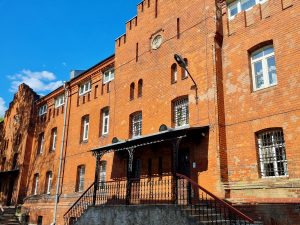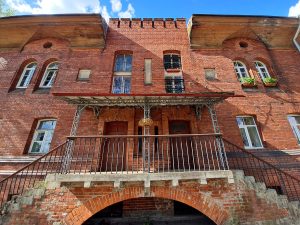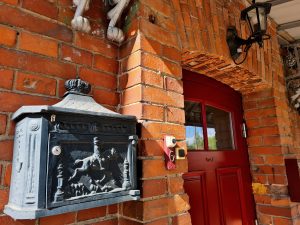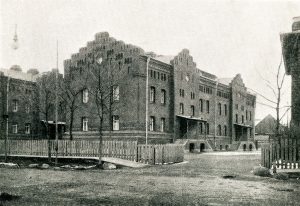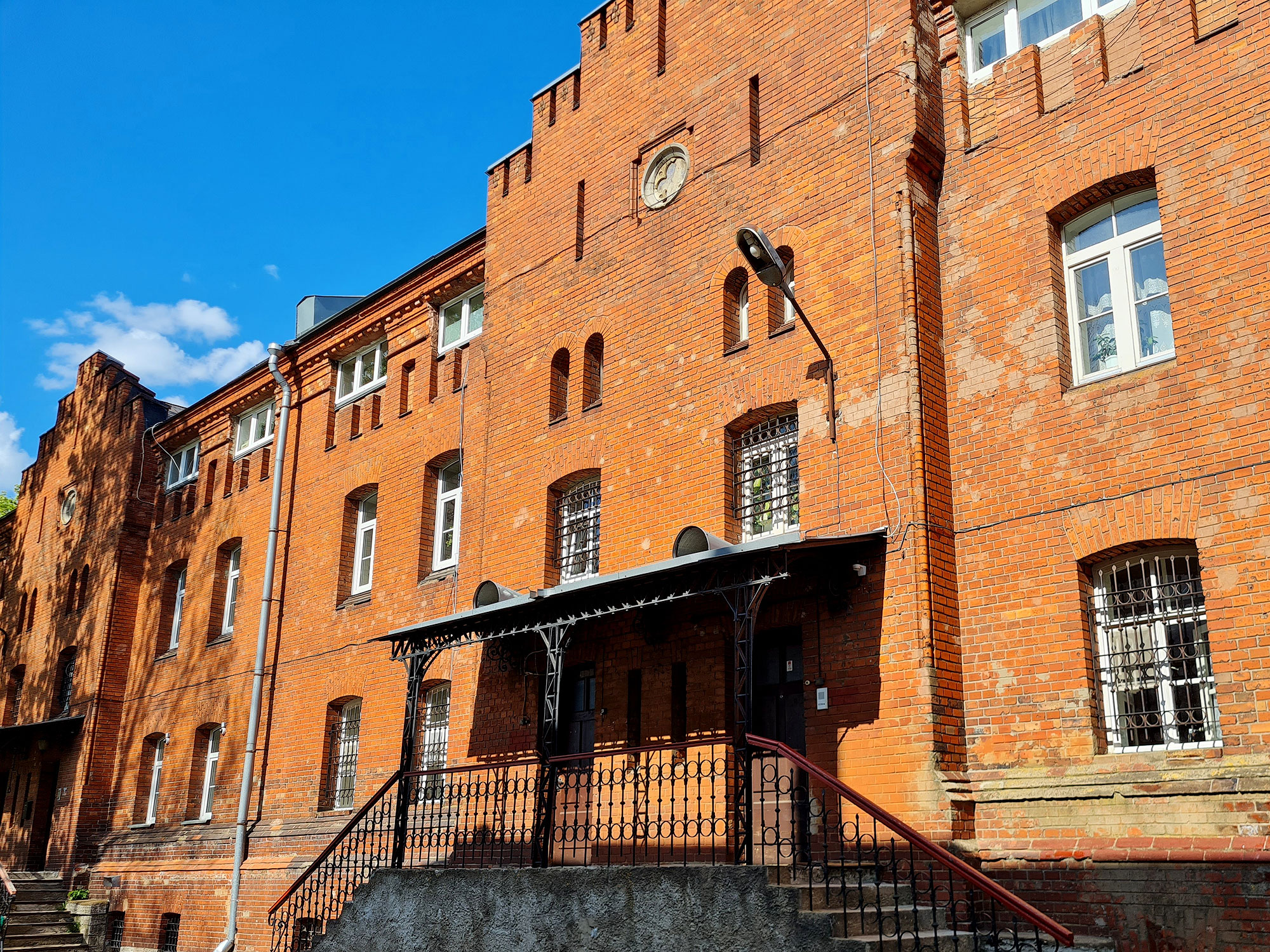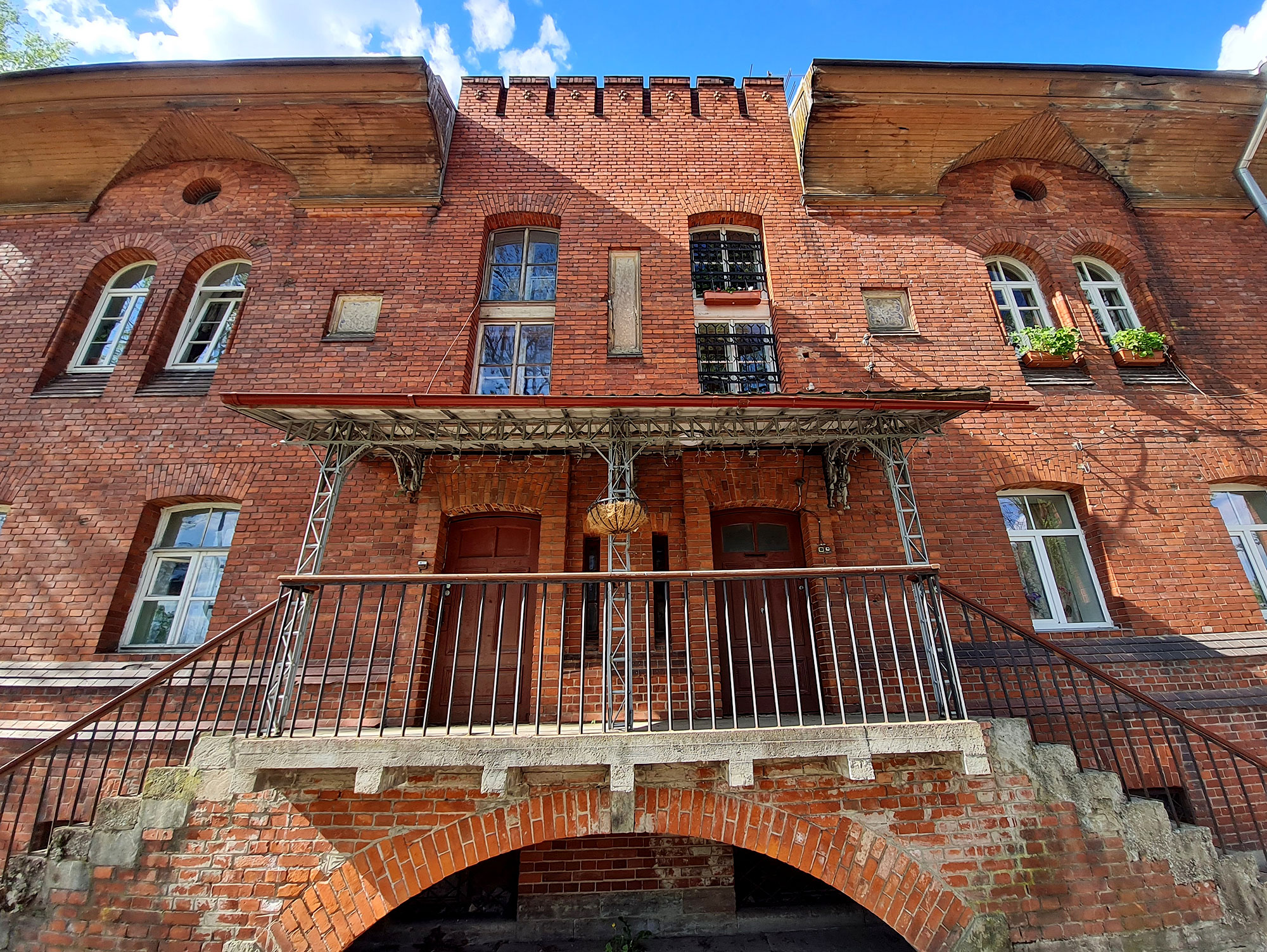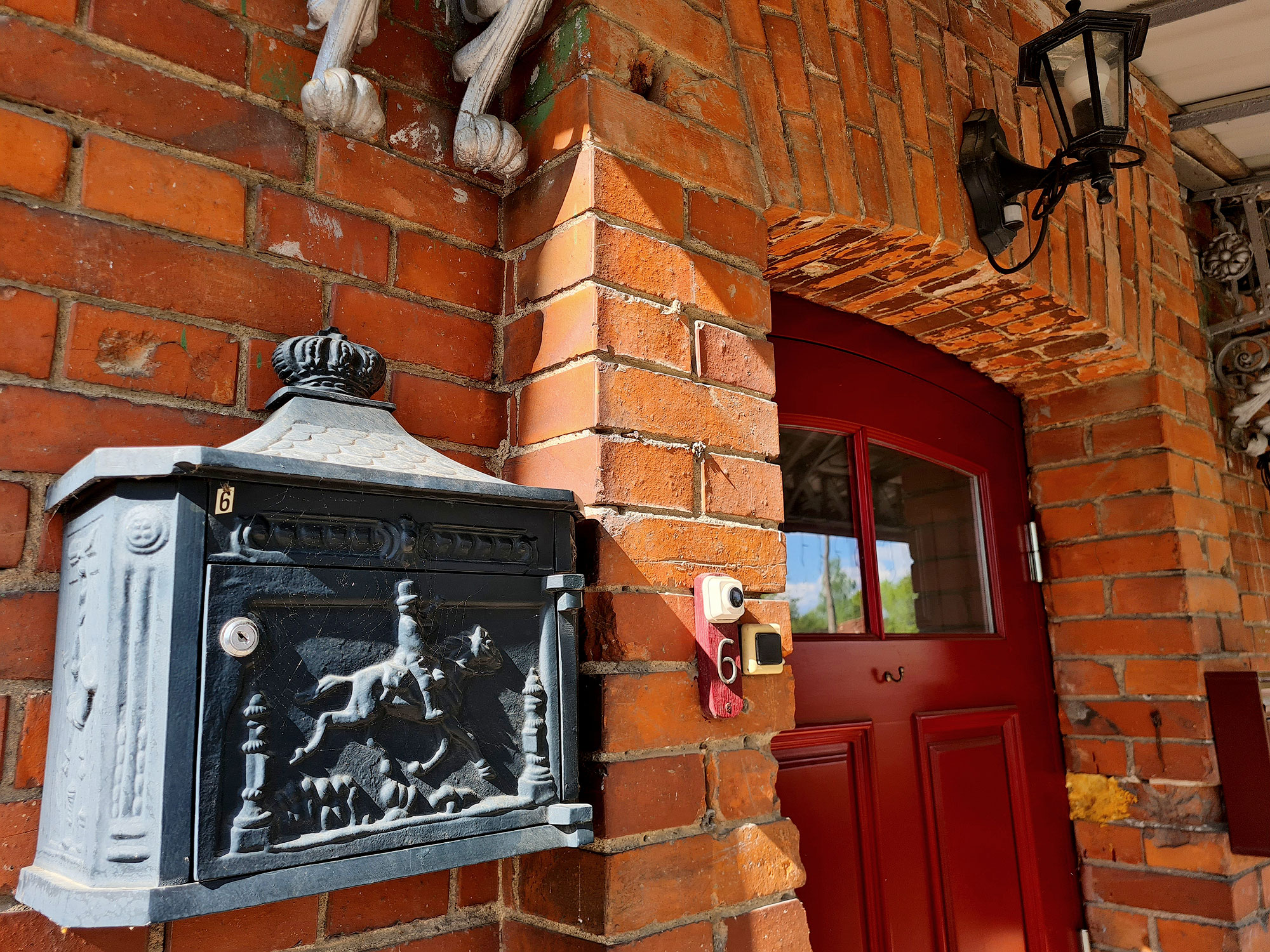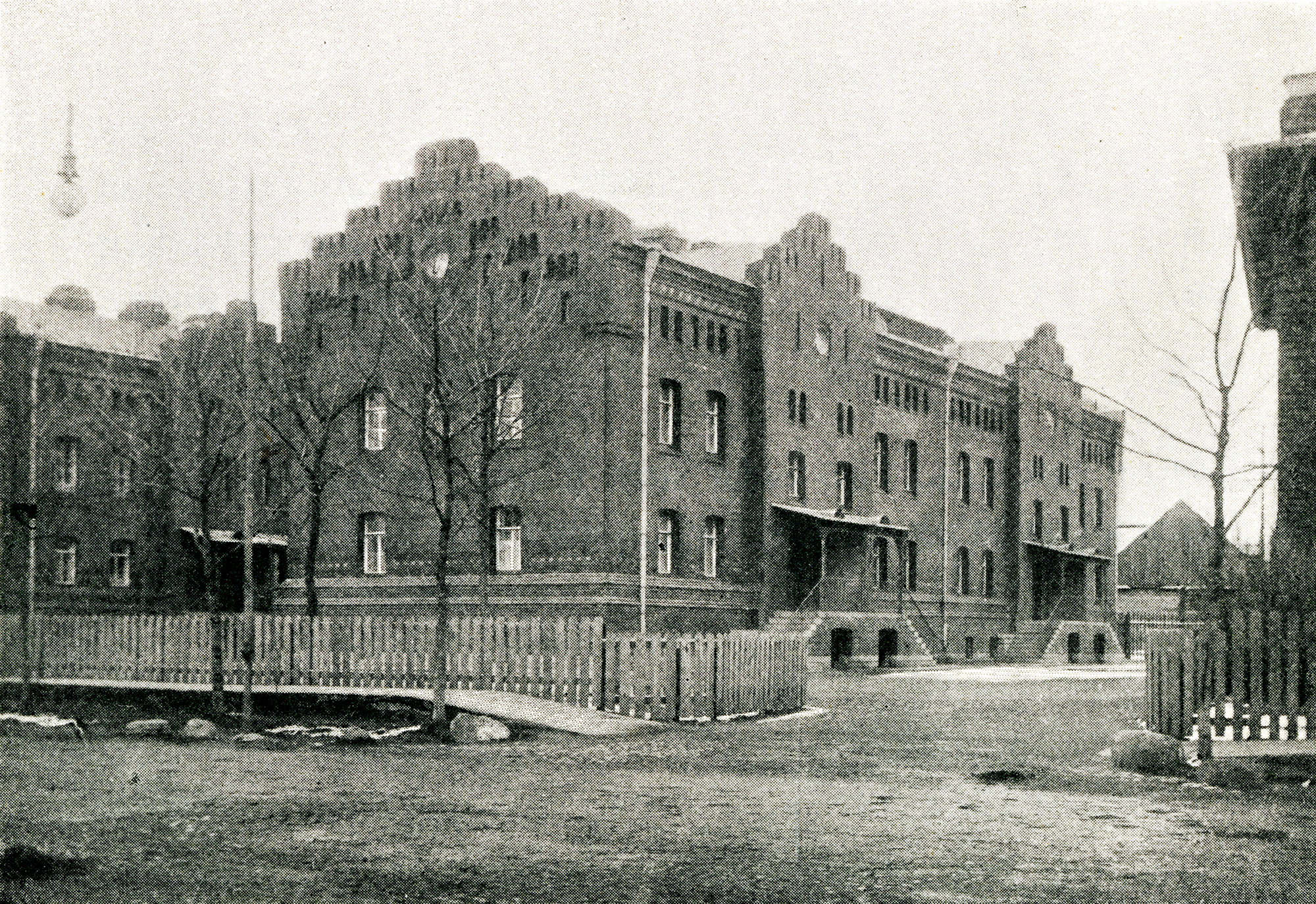Three masters’ dwellings were built in the first decade of the 20th century. The buildings resemble the styles of the Neo-Gothic building – Joala 26 and 28, and the Neo-Renaissance building – Joala 30. The houses have different numbers of staircases. Initially there were two-room apartments with a kitchen on the first floor and three-room apartments on the second floor according to the size of the family. Standing by the buildings whose end facades face the street, notice the double-sided stairs, which remind the historical old town of Narva. The house, facing the street with its longer side, has unique strongly protruding curved wooden cornices. The houses feature other beautiful details – magnificent canopies and stair railings. Inside, the buildings have been largely rebuilt, but are still used as residences.
The following story occurs about half a century before these masters’ dwellings were built.
In the mid-1860s, a number of female textile workers were brought to Kreenholm factory from Germany. This event caused a stir among young men. While waiting for the German girls, they ordered new suits from the tailors. At that time, there were only six tailors in Narva, four German masters and a couple of Russian seamstresses. They had apprentices who traveled from place to place.
On a beautiful day in May, master Martinsberg was quite in demand: all tailors were very busy. One helper who came to Narva was a good and skilled worker, but at the same time an incorrigible drunkard. Vandersell did not show up for work in the morning, but the order had to be fulfilled. The master complained about his trouble to the foreman Luukas. He promised to bring Vandersell to work the next day. A man’s word is his bond!
When Vandersell woke up the next day, he felt pain where he had not felt pain before on similar occasions when he would wake up. Such a hell of a pain! Like a fire burning his lower body. He fumbled around. It was dark. There was cold, damp stone walls around him. He strained at manacles bindings his ankles, but he could not open them. “Where am I, where am I?” he thought. He felt cold sweat dripping from his forehead. “Either in the grave or in hell,” the man growled.
Fear made the man so desperate that he cried out to God and cursed his drinking. And as if heaven had heard his cry for help, the door opened, and two men dressed in black with their faces covered appeared on the threshold with candles. They ordered the poor man to show up for Judgment Day. The fearful sinner was put through several stages until he reached the court. A few wax candles were burning on a black table, masked men were sitting around the table. After some torture, the servant was ready to swear: “I, tailor Vandersell, swear to give up drinking vodka and never to keep a blue Monday as long as I live. If I don’t keep this promise, then hell and its torments will inherit me.” With a trembling hand and hope in his heart to escape from the damned place, Vandersell wrote his name on the paper. The man was taken somewhere and left to wait, with a bag on his head, until it was one in the morning. After what seemed like years time, the bag was taken off Vandersell’s head and he found himself in the town’s pasture.
The next morning, Vandersell was busy at master tailor Martinsberg’s office with the task of getting the Narva young bachelors ready for the party on time. Master Martinsberg rubbed his hands with pleasure, so did foreman Luukas. The latter was paid well. A few weeks later, the long-awaited ship full of German girls came to Narva. The young men of Narva had a lot of fun, but Vandersell did not take part in the party: he was a sober man and remained so. Later, he became a master tailor in St. Petersburg. This is thanks to Luukas, the foreman, and his assistants, and to the ramparts or bastions of Narva.
